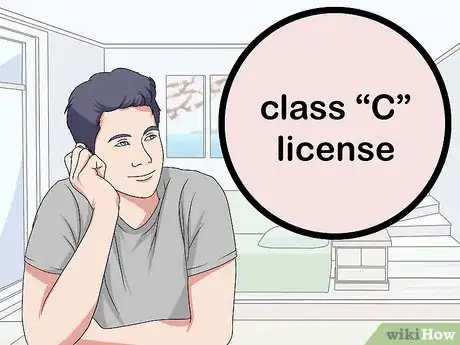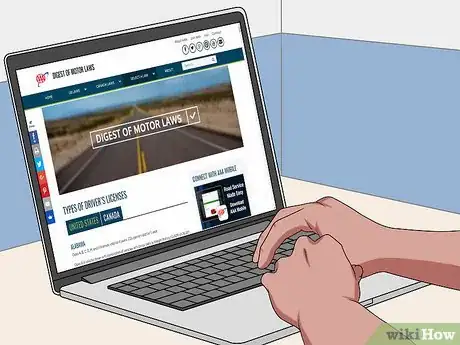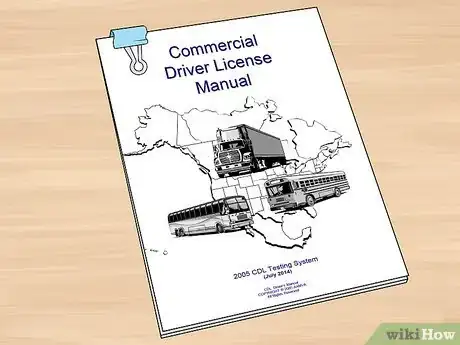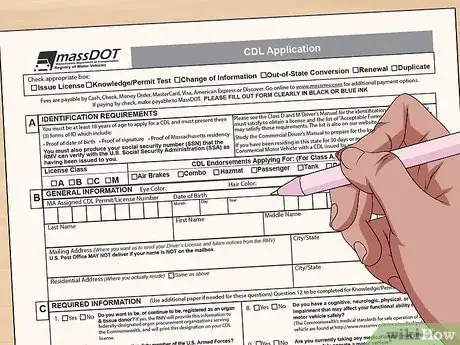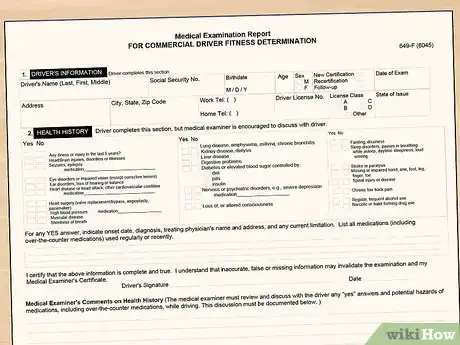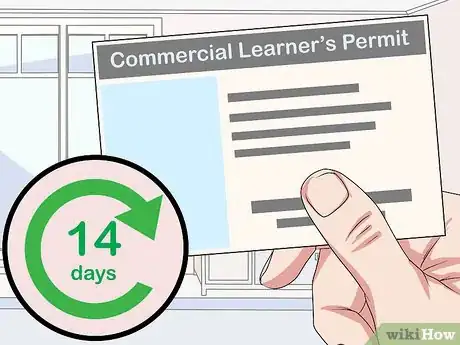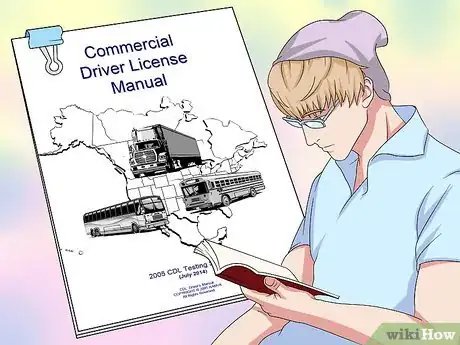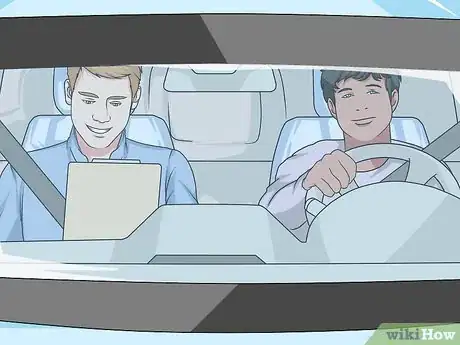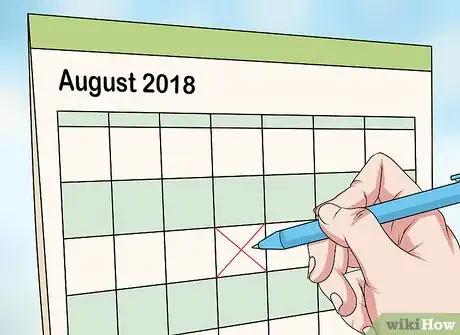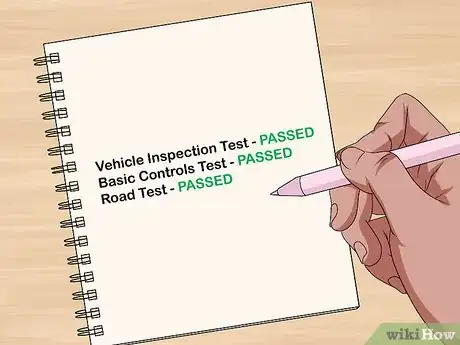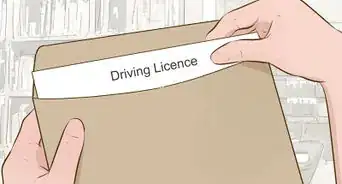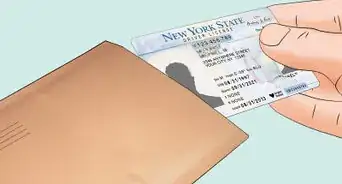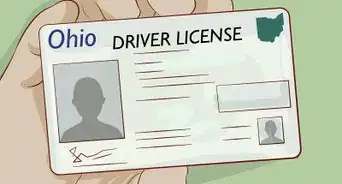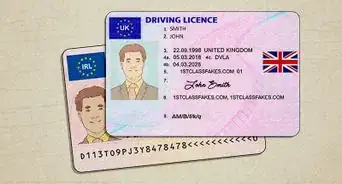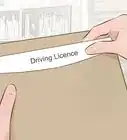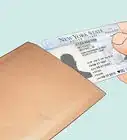This article was co-authored by Jacqueline Regev and by wikiHow staff writer, Christopher M. Osborne, PhD. Jacqueline Regev is a Driving Instructor and the Founder & CEO of Bubble of Safety Driving School. With over 20 years of education experience, she specializes in encouraging people to develop their skills to become safe and courteous drivers. Jacqueline earned a Bachelor's Degree from UCLA and an MA from Chapman University. She is also pursuing a PhD from UC Santa Barbara.
This article has been viewed 74,412 times.
If you come across a job opportunity that involves driving a small passenger bus or carrying limited quantities of hazardous materials in the U.S., the ad will probably include a passage like “Class C license required” or “must have CDL Class C.” Unfortunately, while there is a generally-accepted definition for a Class C Commercial Driver’s License (CDL) in the U.S., the actual specifics of the license vary greatly from state to state. So, your first task is to figure out exactly which license classification you need for the job in your state. Only then can you apply and test for the CDL classification in your state that most closely matches the general “Class C.”
Steps
Getting the Right Class C License
-
1Know the difference between a General and CDL “Class C” license. Some states use "Class C" to indicate a regular driver's license. Unfortunately, this leads to confusion if a posted driving job just says "Class C" because it is unclear whether they mean the regular or CDL license. At least half of the states in the U.S. add variations to the criteria, or call this license something other than “Class C”. In all states, you cannot apply for a CDL Class C before earning your general Class C license.[1] A CDL Class C lets your drive the same vehicles that you can drive with a general driver's license, but you must upgrade to a CDL if the vehicle contains:[2]
- 16 or more passengers (including the driver)
- Hazardous Materials requiring you to place placards on the vehicle.
-
2Put the definition into more practical terms. Class C can be a bit confusing, because it’s basically meant to cover larger vehicles that don’t fit into Class A (over 26,000 lbs. total GVWR, including at least 10,000 lbs. towing) or Class B (over 26,000 lbs. total GVWR, with no more than 10,000 lbs. towing). Practically speaking, though:[3]
- Small passenger busses, small HAZMAT vehicles, and smaller trucks towing trailers generally fit Class C criteria.
- Full-size school or city busses, tractor-trailers, box trucks, and flatbed trucks usually don't fit Class C criteria because they weigh more than 26,000 pounds in GVWR which exceeds the maximum GVWR allowed for a Class C license.
Advertisement -
3Find the “Class C” equivalent in your state. Some states, including Connecticut, Kansas, Utah, and Virginia, have a Class C license that follows the general criteria very closely. Several others break the larger Class C down into smaller sub-categories, or simply use a different classification terminology altogether.
- Visit an informational site like https://drivinglaws.aaa.com/tag/types-of-drivers-licenses/ to get the basics for your state, then contact your state DMV directly for the most accurate and up-to-date information.
Following the General Guidelines for a Class C Permit
-
1Determine if you need to be at least 18 or 21 years old. In order to to get any type of CDL that permits you to drive across state lines in the U.S., federal code requires that you be at least 21. However, some states do offer CDLs for intrastate driving only, if you’re at least 18 years of age.[4]
- If you’re over 21 and get the proper, valid CDL for your “Class C” driving needs in your state, this licensure will be valid even in states that have different “Class C” requirements.
-
2Get a copy of the CDL manual for your state. These should be freely available at your local DMV office, and may be accessible online at your state’s DMV website. The CDL manual for your particular state will give you the most specific and up-to-date guidance for the process where you live.[5]
- Some CDL test-prep or training websites offer to “sell” you a copy of your state’s CDL manual. However, you should be able to get one of these for free no matter which state you live in.
-
3Fill out your state’s CDL application. Each state is responsible for developing its own application, so the particulars will vary based on where you live. However, expect to provide basic identification information, along with perhaps information on your driving history and any criminal history. Plan to pay an application fee as well.[6]
- You’ll probably need to provide proof of identity and residency (e.g., copies of your Social Security Card, current driver’s license, passport, utility bills, etc.).
-
4Provide a medical exam report and vision test. Again, the details will vary here by state, but you should expect to undergo both a physical exam and a vision exam as part of your application process. Because you’ll be licensed to carry precious (e.g., passengers) or dangerous (e.g., HAZMAT) cargo with a Class C CDL, you must demonstrate adequate physical health and eyesight for safety reasons.[7]
-
5Prepare for and take your state’s written CDL exam. Each state prepares its own written exams, so use your state’s CDL manual for guidance on the test’s format and content. Additionally, since you’ll probably be carrying either passengers or HAZMAT with a Class C license, see if you need to take additional written exams in order to get “endorsements” in one or both of these categories.[8]
- Numerous websites will sell you test prep services and practice tests that are advertised as specific to your state’s CDL Class C exam. These can be very helpful, but look over your options carefully and ask for recommendations from other CDL drivers before forking over money for one of these programs.
-
6Keep your Commercial Learner’s Permit (CLP) for at least 14 days. Once you’ve passed your written test(s) and earned your CLP, the process for getting your permanent license will once again vary by where you live. However, federal code requires that you possess your CLP for at least two weeks before you can take any driving tests to earn your CDL.[9]
- But don’t just sit around for two weeks. Instead, practice and prepare for your driving test!
- Testing anxiety is real. And it affects people in different settings, in the classroom and workplaces, and definitely on the driving exam.
- If you plan to sit for your driving exam, preview the testing area and instrument to prepare yourself.
- Practice with someone with whom you do not normally drive. You will have a mock experience of what it will feel like when the examiner gets in your car.
Going from a Permit to a Class C License
-
1Complete any training programs that are required by your state. Once you’ve earned your permit (CLP), some states require that you take a specific type of training program in order to proceed toward your full license. These requirements might include classroom training, on-the-road training, or both. Check your state’s CDL manual for details.[10]
- If you’ll be carrying passengers or HAZMAT, you may need to take training programs that are specific to these areas as well.
-
2Get on-the-road practice alongside an experienced CDL driver. Whether it’s required by law where you live or not, your chances of passing your driving test will greatly improve if you get in the cab and practice under supervision. Work with a driver who has a valid Class C CDL, and ask lots of questions and take their instruction to heart.[11]
- Some states may require that your supervising driver have a specific amount of experience, or be licensed very specifically (e.g., a HAZMAT or passenger endorsement).
- They may also need to keep track of and sign off on your practice sessions. Check your CDL manual for details, or contact your DMV.
-
3Schedule a date and time for your driving test. Contact your DMV for information about when and where you can take your CDL Class C driving exam. Keep in mind that you need to bring a vehicle (that meets the Class C criteria in your state) to the test. So, if you need to borrow a vehicle from a friend or current/potential employer, set that up ahead of time as well.[12]
-
4Pass all three components of your Skills Test. Each state conducts its CDL licensing tests independently, but U.S. code does require that this “Skills Test” include three elements:[13]
- a Vehicle Inspection Test, in which you demonstrate your knowledge of the vehicle type you’ll be driving.
- a Basic Controls Test, which covers the primary control mechanisms (steering, brakes, etc.) for the vehicle.
- a Road Test, in which you will drive the vehicle and be evaluated by a licensed inspector.
- There may also be specific passenger or HAZMAT tests as part of your Class C exam.
-
5Pay the fee and drive away with your Class C CDL. Once you pass all elements of the Skills Test, you’ll be the proud owner of a Class C CDL (or its equivalent) in your state. Make sure all the information on your license is accurate, pay any required fees, and drive off into your new career!
Community Q&A
-
QuestionDo I need to take a physical and written test to get a class C license?
 Community AnswerYes. You will need a medical safety evaluation in addition to a written test.
Community AnswerYes. You will need a medical safety evaluation in addition to a written test. -
QuestionHow much does it cost to get a Class C license?
 Drew Hawkins1Community AnswerThe cost of a Class C license can vary from state to state. In North Carolina, for example, it costs $40 USD to submit an application for a license and $20 USD per year to hold a Class C license. Check your state's DMV website for the specific cost of a Class C license in your area. If it's not listed on the website, call your local DMV office so you can find out ahead of time.
Drew Hawkins1Community AnswerThe cost of a Class C license can vary from state to state. In North Carolina, for example, it costs $40 USD to submit an application for a license and $20 USD per year to hold a Class C license. Check your state's DMV website for the specific cost of a Class C license in your area. If it's not listed on the website, call your local DMV office so you can find out ahead of time. -
QuestionWhat is a Class C license?
 Drew Hawkins1Community AnswerA Class C license refers to a Class C Commercial Driver's License (CDL), and the specifics of the license can vary from state to state in the US. Generally, a Class C license is required if you're driving a small passenger bus, transporting hazardous materials, or driving a truck towing a large trailer. Additionally, the requirements you need to satisfy to get a Class C license can also vary from state to state. To be sure what you need to do to get one, check your local DMV's website, or give them a call.
Drew Hawkins1Community AnswerA Class C license refers to a Class C Commercial Driver's License (CDL), and the specifics of the license can vary from state to state in the US. Generally, a Class C license is required if you're driving a small passenger bus, transporting hazardous materials, or driving a truck towing a large trailer. Additionally, the requirements you need to satisfy to get a Class C license can also vary from state to state. To be sure what you need to do to get one, check your local DMV's website, or give them a call.
References
- ↑ https://drivinglaws.aaa.com/tag/types-of-drivers-licenses/
- ↑ https://www.dmv.org/commercial-drivers/cdl-class-types.php
- ↑ https://www.dmv.org/commercial-drivers/cdl-class-types.php
- ↑ https://driving-tests.org/how-to-get-a-cdl-license/
- ↑ https://www.fmcsa.dot.gov/registration/commercial-drivers-license/how-do-i-get-commercial-drivers-license
- ↑ https://driving-tests.org/how-to-get-a-cdl-license/
- ↑ https://driving-tests.org/how-to-get-a-cdl-license/
- ↑ https://driving-tests.org/how-to-get-a-cdl-license/
- ↑ https://www.fmcsa.dot.gov/registration/commercial-drivers-license/how-do-i-get-commercial-drivers-license
About This Article
If you’ll be driving a small passenger bus or transporting small amounts of hazardous materials in the US, you’ll need a class C driver’s license. To get your class C license, you’ll need to file an application for a Commercial Driver's License with the DMV. The specifics vary by state, but you’ll usually have to provide a medical exam report and vision test to prove that you’re fit to drive a commercial vehicle. You’ll also need to take a written exam. Once you’ve passed the written exam, you’ll get a permit to practice driving small commercial vehicles with supervision. When you feel confident handling a commercial vehicle, take your final class C test to get your license. Contact your DMV for information about when and where you can take the exam. For more tips, including what to expect on your final class C driving test, read on!
